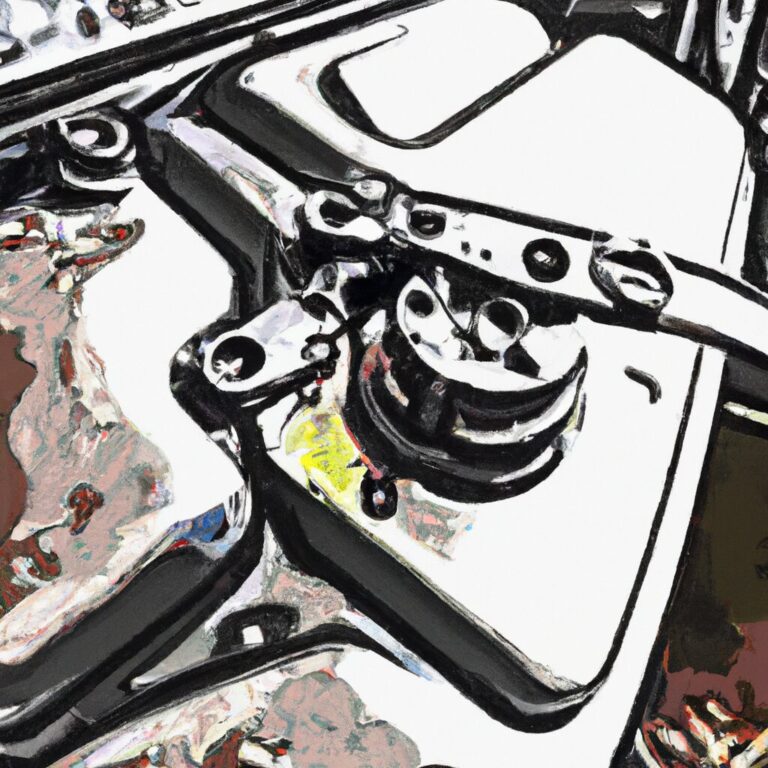How to Fix a Parking Brake
To fix a parking brake, first, check the parking brake cables for any wear or damage. Adjust or replace as needed.
If the cables are in good condition, the issue may lie with the brake shoes or calipers, which might need adjustment or replacement. Ensuring your parking brake is functioning properly is essential for the safety of your vehicle. A malfunctioning parking brake can lead to accidents and legal consequences.
By following a few simple steps, you can easily fix a parking brake issue and drive confidently knowing your vehicle is secure when parked. In this guide, we will provide you with a comprehensive overview of how to troubleshoot and fix common parking brake problems efficiently. Let’s delve into the steps needed to get your parking brake back in optimal working condition.

Credit: m.youtube.com
Common Parking Brake Problems
Parking brakes are essential components of a vehicle’s safety system, but they can encounter various issues that affect their functionality. Understanding the common parking brake problems can help you identify and resolve issues effectively, ensuring your car remains safe and secure when parked. Here are some of the common parking brake problems and how to address them:
Loose Brake Lever
A loose brake lever can hinder the proper engagement of the parking brake, resulting in potential safety hazards. When the brake lever feels loose and lacks tension, it may indicate issues with the brake cable or the lever itself. To fix this problem, tighten the adjustment nut located near the brake lever until the appropriate tension is restored. If the issue persists, consult a professional to inspect and repair the brake system.
Stuck Brake Cable
A stuck brake cable can prevent the parking brake from releasing or engaging properly, causing inconvenience and safety concerns. When encountering this issue, start by applying lubricant to the cable to free up any corrosion or rust that may be causing the cable to stick. Gradually work the parking brake lever to distribute the lubricant and facilitate smooth cable movement. If the problem persists, consider replacing the brake cable to ensure the parking brake operates seamlessly.

Credit: www.wikihow.com
Inspecting The Parking Brake
Inspecting the Parking Brake is an important step in ensuring your vehicle’s safety and functionality. Proper inspection allows you to identify any issues and address them promptly. This section will guide you on how to inspect your parking brake effectively.
Locating The Parking Brake Assembly
To begin, locate the parking brake assembly underneath your vehicle. This is typically located near the rear wheels and may vary depending on the make and model of your car.
Checking The Brake Pads
Inspect the brake pads for signs of wear and tear, such as thinning or uneven surfaces. Ensure they are properly aligned and have adequate thickness for optimal braking performance.
Adjusting The Parking Brake
Fixing a parking brake is a relatively simple task that can be done by following a few easy steps. First, locate the parking brake and identify any issues such as loose cables or worn brake pads. Then, make the necessary adjustments or repairs to ensure the brake functions properly.
Regularly maintaining and adjusting the parking brake will help ensure the safety and efficiency of your vehicle.
Adjusting the Parking Brake To ensure your parking brake functions effectively, it’s crucial to know how to adjust it properly. The adjustment process involves tightening the brake lever and adjusting the brake cable tension. Below we will guide you through these steps.Tightening The Brake Lever
To tighten the brake lever, locate the adjustment nut near the base of the lever. Use a wrench to turn the nut clockwise until the lever feels firm when engaged.Adjusting The Brake Cable Tension
1. Park the vehicle on a level surface and engage the parking brake. 2. Locate the adjuster nut on the brake cable near the rear wheels. 3. Loosen the nut with a wrench and adjust the tension by pulling the cable tighter. 4. Tighten the adjuster nut to secure the new tension level. By following these steps, you can easily adjust your parking brake for optimal performance.Replacing Parking Brake Components
Proper maintenance of your parking brake is essential for the safety and functionality of your vehicle. Over time, the brake pads and cables can wear out, leading to decreased braking performance. Replacing these components is a relatively straightforward process that can be done at home with the right tools and some basic mechanical knowledge. Below, we’ll go through the steps for replacing brake pads and the brake cable itself to ensure your parking brake is operating at its best.
Replacing Brake Pads
When it comes to replacing brake pads on your parking brake, it’s crucial to use quality replacement pads. Start by securely supporting your vehicle on jack stands and removing the rear wheels to access the brake assembly. Locate the brake caliper and remove the retaining bolts to access the brake pads. Carefully remove the old pads and insert the new ones, ensuring they are properly aligned. Once the new pads are in place, reassemble the caliper and wheel, and test the parking brake to ensure it’s functioning properly.
Replacing The Brake Cable
If you find that your parking brake is not engaging properly, it may be time to replace the brake cable. Begin by locating the cable under the vehicle and disconnecting it from the brake assembly. Next, remove the cable from any retaining clips or brackets and feed the new cable into place, ensuring it follows the same path as the old one. Once the cable is installed, adjust it to the correct tension to ensure proper braking performance. Lastly, test the parking brake to ensure it engages and releases smoothly.

Credit: www.myotherstuff.com
Frequently Asked Questions For How To Fix A Parking Brake
What Would Cause A Parking Brake To Not Work?
The parking brake may not work due to worn or damaged brake cables, a malfunctioning brake lever or pedal, insufficient brake fluid, or worn brake pads or shoes.
How Do You Fix A Parking Brake That Won’t Release?
To fix a parking brake that won’t release, check for any obstructions and ensure the brake handle is fully disengaged. If the issue persists, inspect the brake cables and adjust as needed. Lubricating the mechanism can also help free up any stuck components.
How Do You Fix A Loose Parking Brake?
To fix a loose parking brake, tighten the adjustment nut under the vehicle by turning it clockwise with pliers.
How Do You Fix A Parking Brake Fault?
To fix a parking brake fault, first, check the brake cables for any damage. Adjust or replace worn cables, test the parking brake, and ensure it holds the vehicle securely. If issues persist, consult a professional mechanic for further inspection and repair.
Q: What Causes A Parking Brake To Malfunction?
A: A parking brake can malfunction due to worn brake pads, loose cables, or a faulty brake lever mechanism.
Q: How Do I Know If My Parking Brake Is Broken?
A: Signs of a broken parking brake include the car rolling on an incline, the brake lever not engaging, or strange noises when applying the brake.
Q: Can I Fix A Parking Brake Myself?
A: Depending on the issue, you can fix a parking brake yourself by tightening cables, adjusting the brake lever, or replacing worn brake pads.
Conclusion
Fixing a parking brake is essential for vehicle safety. By adhering to the steps and tips provided in this guide, you can confidently address this issue. Remember to regularly inspect and maintain your parking brake to prevent future problems. With proper care and attention, your parking brake will continue to function effectively, ensuring the safety of your vehicle and passengers.


